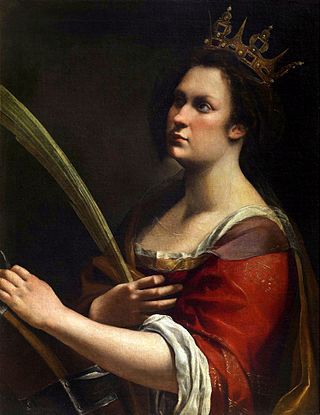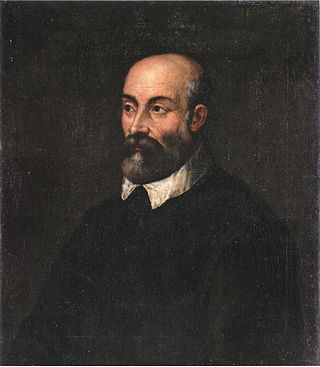Contents
This article needs additional citations for verification .(December 2009) |
| |||
|---|---|---|---|
| Buildings and structures +... |
| 1580s . 1590s in architecture . 1600s |
| . Architecture timeline |
This article needs additional citations for verification .(December 2009) |
| |||
|---|---|---|---|
| Buildings and structures +... |
| 1580s . 1590s in architecture . 1600s |
| . Architecture timeline |



Baroque painting is the painting associated with the Baroque cultural movement. The movement is often identified with Absolutism, the Counter Reformation and Catholic Revival, but the existence of important Baroque art and architecture in non-absolutist and Protestant states throughout Western Europe underscores its widespread popularity.

Annibale Carracci was an Italian painter and instructor, active in Bologna and later in Rome. Along with his brother and cousin, Annibale was one of the progenitors, if not founders of a leading strand of the Baroque style, borrowing from styles from both north and south of their native city, and aspiring for a return to classical monumentality, but adding a more vital dynamism. Painters working under Annibale at the gallery of the Palazzo Farnese would be highly influential in Roman painting for decades.

Vincenzo Scamozzi was an Italian architect and a writer on architecture, active mainly in Vicenza and Republic of Venice area in the second half of the 16th century. He was perhaps the most important figure there between Andrea Palladio, whose unfinished projects he inherited at Palladio's death in 1580, and Baldassarre Longhena, Scamozzi's only pupil.

In art history, "Old Master" refers to any painter of skill who worked in Europe before about 1800, or a painting by such an artist. An "old master print" is an original print made by an artist in the same period. The term "old master drawing" is used in the same way.

Andrea Palladio was an Italian Renaissance architect active in the Venetian Republic. Palladio, influenced by Roman and Greek architecture, primarily Vitruvius, is widely considered to be one of the most influential individuals in the history of architecture. While he designed churches and palaces, he was best known for country houses and villas. His teachings, summarized in the architectural treatise, The Four Books of Architecture, gained him wide recognition.

The Procuratie are three connected buildings along the perimeter of Saint Mark's Square in Venice, Italy. Two of the buildings, the Procuratie Vecchie and the Procuratie Nuove, were constructed by the procurators of Saint Mark, the second-highest dignitaries in the government of the Republic of Venice, who were charged with administering the treasury of the Church of Saint Mark as well as the financial affairs of state wards and trust funds established on behalf of religious and charitable institutions.

Antonio da Ponte (1512–1597) was a Venetian architect and engineer, most famous for his rebuilding of the Rialto Bridge in Venice.
Events from the year 1656 in art.
The year 1714 in architecture involved some significant events.

Marcantonio Barbaro (1518–1595) was an Italian diplomat of the Republic of Venice.

Villa Molin is a patrician residence in the neighborhood of Mandria, in Ponte della Cagna, south of Padua, in the Veneto region of northern Italy. It was designed for Nicolò Molin, a Venetian noble, by Vincenzo Scamozzi and completed in 1597. It faces Mandriola, on the opposite side of the Canale di Battaglia. The original agricultural setting of the villa, composed of pasture and orchards, has given way to a residential dormitory community of Padua.
Events from the year 1667 in art.
Events from the year 1675 in art.
Events from the 1590s in Denmark.
Events from the 1590s in the Spanish Netherlands and Prince-bishopric of Liège.
Lorenzo Priuli was Venetian aristocrat and ambassador in France and at Rome. He was Patriarch of Venice from 1591 to his death, and a Cardinal from 1596.
Francesco Buonamici (1596–1677) was an Italian Baroque architect, painter and engraver who was active in Lucca, Malta, Sicily and Rome during the 17th century. He played a significant role in the introduction of Baroque in Malta.

Giacomo Foscarini, also spelled Jacopo Foscarini, was a merchant, statesman and admiral of the Republic of Venice.